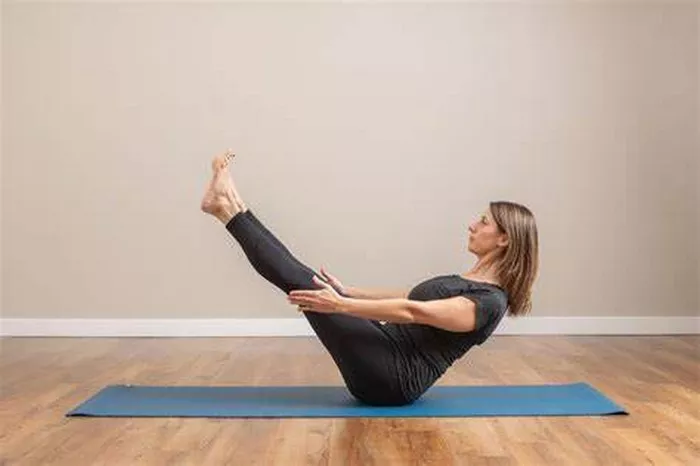Hot yoga has surged in popularity in recent years, attracting fitness enthusiasts and yogis alike. Known for its intense heat and rigorous practice, many wonder: Is hot yoga hard? This article aims to answer this question by exploring the nature of hot yoga, its challenges, benefits, and how to approach this unique form of exercise. By the end of this article, you will have a well-rounded understanding of hot yoga and whether it’s the right fit for you.
1. Understanding Hot Yoga
1.1 Definition and History
Hot yoga typically refers to yoga practices conducted in a heated room, often set between 85°F and 105°F (29°C to 40°C). This style has its roots in traditional Hatha yoga, with variations developed by different instructors over time.
1.2 The Different Styles of Hot Yoga
Bikram Yoga: A specific sequence of 26 postures and two breathing exercises practiced in a heated room.
Inferno Hot Pilates: A high-intensity interval training class combining pilates and hot yoga.
Baptiste Yoga: A power yoga style that incorporates elements of hot yoga but emphasizes flow and alignment.
2. The Environment of Hot Yoga
2.1 The Heated Room
The heated environment in hot yoga studios is designed to enhance flexibility, detoxification, and overall performance. The heat encourages muscles to relax, making it easier to achieve deeper stretches.
2.2 Equipment and Attire
Practicing hot yoga requires minimal equipment. Most practitioners wear lightweight, moisture-wicking clothing and use a yoga mat, towel, and sometimes a water bottle to stay hydrated.
3. The Physical Demands of Hot Yoga
3.1 Cardiovascular Challenge
Hot yoga can elevate your heart rate significantly. The heat increases your heart rate, which can lead to a more intense workout.
3.2 Strength and Endurance
Many hot yoga classes include postures that require strength, balance, and endurance. Practitioners often find themselves challenged physically, especially if they are new to the practice.
3.3 Flexibility and Range of Motion
The heated environment can help improve flexibility, allowing practitioners to achieve deeper stretches than they might in a regular yoga class. However, this can also pose a risk for overstretching, particularly for beginners.
See also: Essentials for Hot Yoga: Full Guide to a Successful Practice
4. The Mental Challenges of Hot Yoga
4.1 Mindfulness and Focus
Practicing in a heated environment requires heightened mental focus. Maintaining concentration while managing discomfort can be a significant challenge.
4.2 Breath Control
Breath is vital in any yoga practice, but in hot yoga, controlling your breath can help you stay calm and grounded despite the heat. Practitioners may struggle initially but can develop this skill over time.
4.3 Overcoming Discomfort
Many newcomers find the heat overwhelming. Learning to accept and work through discomfort is a critical aspect of developing resilience in hot yoga.
5. The Benefits of Hot Yoga
5.1 Improved Flexibility
Regular practice can lead to significant improvements in flexibility, which benefits overall physical health and well-being.
5.2 Detoxification
The heat promotes sweating, which can aid in detoxifying the body and improving skin health.
5.3 Enhanced Cardiovascular Health
The elevated heart rate during hot yoga classes can contribute to cardiovascular fitness and overall endurance.
5.4 Stress Relief and Mental Clarity
Many practitioners find hot yoga to be a powerful tool for stress relief, helping to clear the mind and promote emotional well-being.
6. Is Hot Yoga Hard? Debunking Myths and Misconceptions
6.1 The Myth of Intensity
While hot yoga can be intense, it does not have to be. Beginners can modify postures and take breaks as needed.
6.2 Experience Level
Hot yoga is accessible for practitioners of all levels. Many studios offer beginner classes specifically designed to introduce newcomers to the practice.
6.3 Hydration and Preparation
Proper hydration and preparation can significantly reduce the difficulty of hot yoga. Staying hydrated before and after class is essential for optimal performance.
7. Preparing for Hot Yoga
7.1 Hydration Strategies
Before Class: Drink plenty of water in the hours leading up to your class.
During Class: Keep a water bottle nearby to take small sips when needed.
After Class: Rehydrate with water and consider electrolyte drinks if you’ve sweated heavily.
7.2 Clothing and Gear
Opt for lightweight, breathable clothing to enhance comfort during practice. Consider using a yoga towel to absorb sweat and prevent slipping.
7.3 Mental Preparation
Cultivating a positive mindset and setting intentions before class can enhance your experience. Visualize yourself succeeding in challenging poses and staying calm.
8. Tips for Beginners
8.1 Start Slow
If you are new to hot yoga, start with shorter classes or lower-temperature sessions to acclimate your body gradually.
8.2 Listen to Your Body
Pay attention to how your body feels during practice. If you feel dizzy or overly fatigued, take a break or modify your poses.
8.3 Communicate with Instructors
Don’t hesitate to ask instructors for modifications or guidance. They can provide support tailored to your skill level.
9. Advanced Practices in Hot Yoga
9.1 Building Endurance
As you become more comfortable with hot yoga, focus on building your endurance and strength through consistent practice.
9.2 Exploring Different Styles
Experimenting with different styles of hot yoga can help you find the approach that resonates most with you.
9.3 Deepening Your Practice
Incorporate pranayama (breath control) and meditation techniques to enhance your overall experience and deepen your practice.
10. Conclusion
So, is hot yoga hard? The answer is subjective and depends on individual perspectives, physical fitness, and personal goals. While it presents unique challenges, it also offers numerous benefits for those willing to embrace the heat. With proper preparation, a positive mindset, and a commitment to practice, anyone can thrive in hot yoga. Whether you’re looking to improve flexibility, detoxify, or simply explore a new fitness routine, hot yoga can be a rewarding addition to your wellness journey.
This article provides a comprehensive exploration of the topic. If you need specific sections elaborated or additional information, feel free to ask!
Related topics:
The Weight Loss Benefits of Hot Yoga: What You Want to Know





















